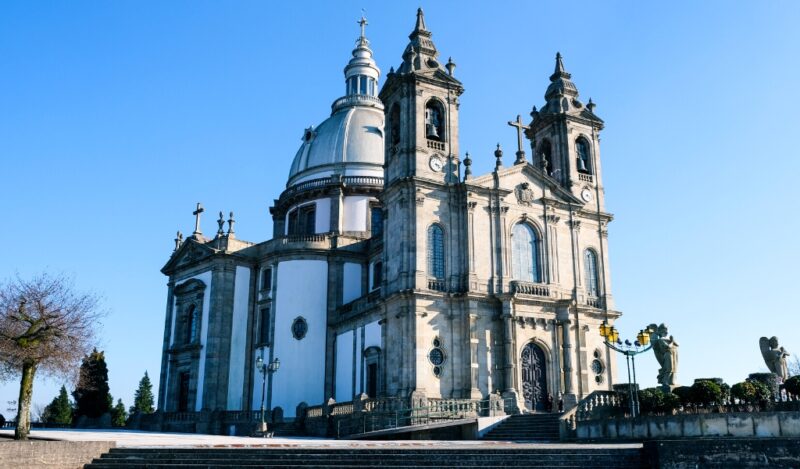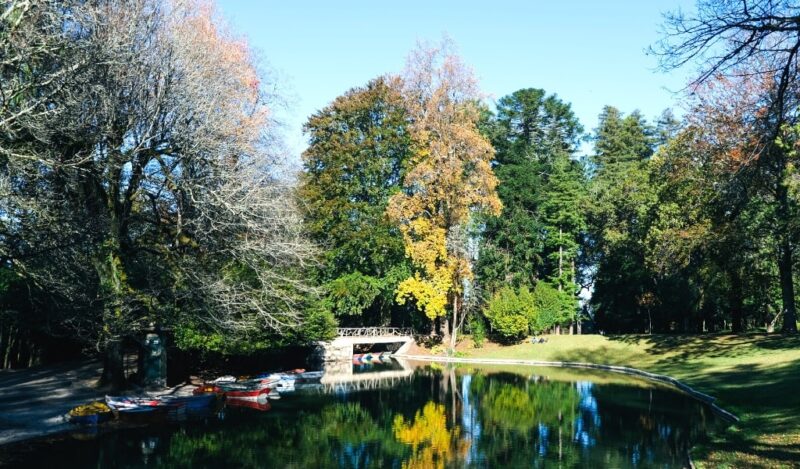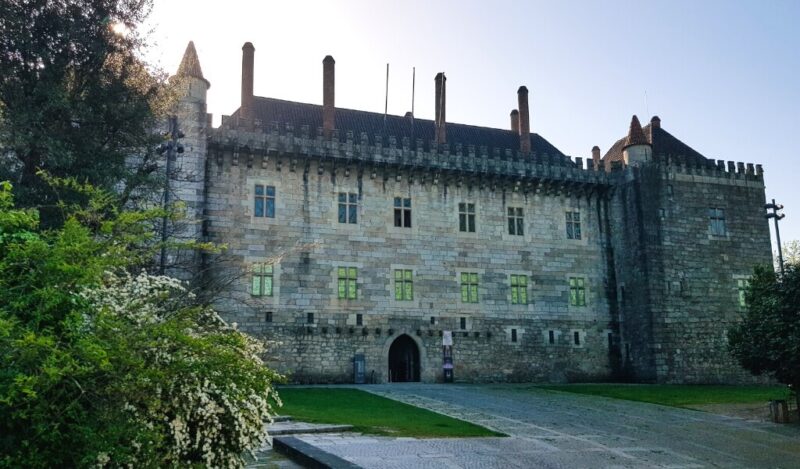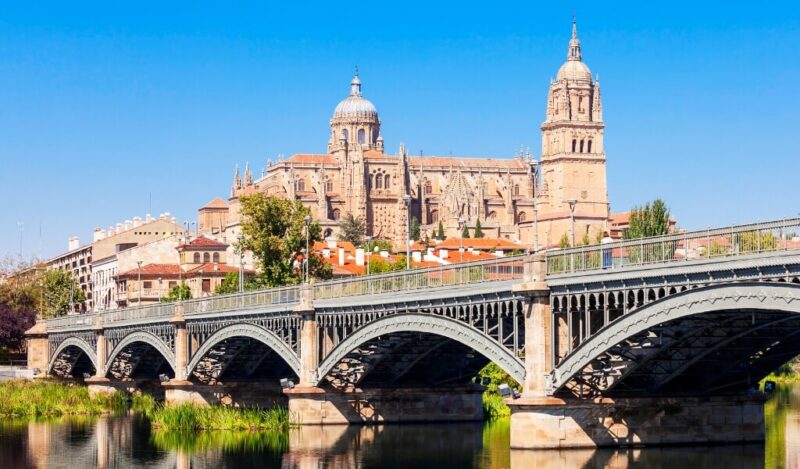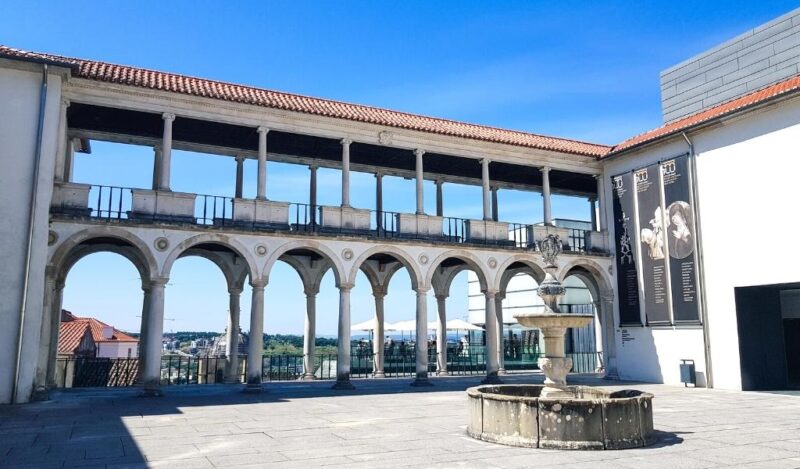The Pantheon in Rome was designed by Marcus Vipsanius Agrippa between 25 and 27 BC, as a temple dedicated to the twelve main gods of Roman mythology: Jupiter, Juno, Neptune, Minerva, Mars, Ceres, Phoebus, Diana, Vulcan, Venus, Mercury, and Bacchus. And, since then, it has become one of the most important symbols of the city.
Rebuilt by Emperor Hadrian between 118 and 125 AD, the Pantheon is the best-preserved monument in Ancient Rome. Unlike current archaeological sites such as the Colosseum, the Roman Forum and Palatine Hill, the Baths of Caracalla, or the Imperial Forums, the Pantheon in Rome has remained almost intact over time!
So, do you want to know How To Visit The Pantheon In Rome In 2024? Keep reading!
This post may contain affiliate links, meaning I earn a small commission if you make a purchase, at no additional cost to you. Please read my disclosure & privacy policy for more information.
No time to read now? Pin it for later!


Brief History of the Pantheon in Rome
As I mentioned in the introduction, the Pantheon in Rome was built over two millennia ago, during the reign of Augustus (the founder of the Roman Empire and, consequently, its first emperor). However, according to archaeological excavations, little remains of the original building (the so-called “Pantheon of Agrippa”), except for the façade.
It was on this same façade that Emperor Hadrian, together with his architect Apollodorus of Damascus, paid homage to the first author of the pagan temple, with the inscription “M·AGRIPPA·L·F·COS·TERTIVM·FECIT” (i.e. “Marcos Agrippa, son of Lucius, made [this building] when consul for the third time”).


In 608, Pope Boniface IV received the Pantheon in Rome from Emperor Phocas and decided to convert it into a Christian church, consecrating it to “Saint Mary and the Martyrs”. At the same time, the Pope ordered the transfer of dozens of martyrs from the Catacombe di Roma to the new Basilica di Santa Maria dei Martiri.
This decision ended up saving the monument from abandonment and destruction – which is what happened to most buildings and structures of the Roman Empire during the Middle Ages. Already in the Renaissance, the Pantheon in Rome was transformed into what is known today as a “pantheon”: a mausoleum of illustrious figures from History.
Inside, you can visit the tombs of the architect Baldassare Peruzzi, the painter Raffaello Sanzio, the composer Arcangelo Corelli, the kings Victor Emmanuel II and Umberto I, and the queen Margherita of Savoy (among others). Nevertheless, the Pantheon in Rome continues to function as a Catholic church, holding masses and other religious ceremonies.
World Heritage
Did you know that the Pantheon in Rome was part of Italy’s second set of inscriptions on the UNESCO World Heritage List? This 4th session of the World Heritage Committee took place in Paris (France), between September 1st and 5th, 1980.
Only one other Italian site was announced in the session: the Church and Dominican Convent of Santa Maria delle Grazie with “The Last Supper” by Leonardo da Vinci.
Nowadays, Italy is the country in the world with the most UNESCO sites: it has fifty-nine heritage assets (both cultural and natural) inscribed on the world list of the United Nations Educational, Scientific, and Cultural Organization!
In the meantime, I’ve already had the opportunity to visit eight of them:
- 18th-Century Royal Palace at Caserta with the Park (1997)
- Archaeological Area of Pompei (1997)
- Cinque Terre (1997)
- Historic Center of Florence (1982)
- Historic Center of Naples (1995)
- Historic Center of Rome and the Properties of the Holy See (1980) – Castel Sant’Angelo, Colosseum, Pantheon, Roman Forum and Palatine Hill
- The Porticoes of Bologna (2021)
- Venice and its Lagoon (1987)
How to Get to the Pantheon in Rome
The Pantheon in Rome is located in Piazza della Rotonda, a square in the heart of the historic center of Rome. From here, you’re very close to several other tourist attractions in the Italian capital, such as the Piazza Navona (300 meters), the Largo di Torre Argentina (400 meters), the Fontana di Trevi (650 meters), or the Monument to Vittorio Emanuele II (850 meters).
In my opinion, Rome is a true “open-air museum” and therefore deserves to be explored on foot. However, if you prefer to travel by public transportation, you can reach the Pantheon by bus (numbers 30, 40, 62, 64, 81, 87, and 492; Largo di Torre Argentina stop) or subway (line A, Barberini station).
Opening Hours & Ticket Prices
The Pantheon in Rome is open every day of the year (except on January 1st, August 15th, and December 25th) from 9 am to 7 pm, with the last entry being at 6:30 pm. As for tickets, they cost €5 (adults) or €2 (young people aged 18 to 25), with those under 18 not paying entry.
There’s also a guided tour (20-25€), which lasts 45 minutes and is done exclusively in English, and an audio-guided tour, which lasts 35 minutes and is available in eight languages: English, Italian, Spanish, Portuguese, French, German, Chinese, and Russian.
TIP: If you want to visit the Pantheon in Rome independently, I recommend that you download the official app from Google Play or the App Store. In addition to offering a complete guide with all the points of interest, this application also gathers useful information, as well as the history of the monument, curiosities, events, and much more!
What to See at the Pantheon in Rome
Portico
Although the Pantheon in Rome is known worldwide for its circular plan, the truth is that the building is preceded by an imposing portico of granite columns, crowned by capitals in Corinthian style.

Inspired by the pagan temples of Ancient Greece, the Pantheon in Rome comprises a first row of eight columns, which support a majestic pediment (once decorated with bronze reliefs). Two rows of four columns each follow, making a total of sixteen monolithic columns.
Not everyone knows, but these columns were carved in Mons Claudianus, a Roman quarry in eastern Egypt! Can you imagine all the logistics involved in its transporting?
Door
At about 7.50 meters high and 4.90 meters wide, the entrance door to the Pantheon in Rome is the largest and one of the oldest examples of doors from Ancient Rome. However, it should be noted that its longevity is questioned by some historians, who claim that it’s a 15th-century reconstruction.

Another interesting detail is the fact that this entrance door is the only source of natural light inside the monument, besides the famous oculus of the dome!
Finally, you can admire a series of commemorative plaques, which have been installed on either side of the door. Made in marble, these inscribed panels mention Pope Urban VIII (1623-1644) and Pope Pius IX (1846-1878).
Cella and Oculus
The interior of the Pantheon in Rome consists of a circular room, 43 meters high and wide. This space is still called “cella” today, as this was the name given to the inner chamber of the temples of Classical Antiquity. All around, there are seven rectangular and circular chapels, as well as eight aedicules (that is, small niches or sanctuaries).
The dome, lined with concrete coffers, has an opening at the top with a diameter of 9 meters (the well-known “oculus”). When it rains, the water is drained through 22 holes installed in the ground. And when the sun’s rays enter through the oculus, the Pantheon in Rome becomes an inverted sundial, where the time is marked by light instead of shadow!
Even at over two thousand years old, the Pantheon in Rome still has the largest unreinforced concrete dome in the world!
Tomb of King Victor Emmanuel II
The Tomb of King Victor Emanuel II (in Italian, Vittorio Emanuele II) was designed in 1888, based on a drawing by Manfredo Manfredi. You can find it in the second chapel, previously dedicated to the Holy Spirit.

Vítor Emanuel II was the last King of Sardinia (1849-1861) and the first King of Italy (1861-1878). For this reason, he’s called “Padre della Patria” (or “Father of the Fatherland”) by the Italian people.
The Tomb of King Victor Emmanuel II is made of bronze and decorated with the coat of arms of the House of Savoy. At the top, there’s a sculpture of the Roman Eagle (or Aquila), a symbol of Ancient Rome. And despite Italy being a Republic since 1946, the royal tombs of the Pantheon in Rome are still looked after by supporters of the monarchy!
Main Altar
The Main Altar (and apse) of the Pantheon in Rome was designed by Alessandro Specchi, an architect of the renowned Accademia di San Luca (an academy of artists in Rome, founded in 1577). The work was commissioned by Pope Clement XI and its construction began in 1700, having been completed more than two decades later, in 1721.

Above the Main Altar, an image of Our Lady with the Child was installed, in Byzantine style. This piece was donated by Emperor Phocas to Pope Boniface IV when the Pantheon was inaugurated as a Christian temple in 609 AD!
The structure of the choir is much later than the Main Altar, as it dates from 1840. It was designed by Luigi Poletti, the neoclassical architect responsible for the reconstruction of the Basilica Papale di San Paolo fuori le Mura.
Chapel of the Crucifix
The fifth chapel of the Pantheon in Rome is nicknamed the Chapel of the Crucifix (in Italian, Cappella del Crocifisso), after the 16th-century wooden crucifix that adorns the altar.

The Chapel of the Crucifix is located on the left side of the cella, more precisely northwest of the entrance door. And, normally, you find a lot of people in this area since the chapel is right next to Raffaello Sanzio’s tomb!
Inside the Chapel of the Crucifix, it’s still possible to admire two works (on the left and right walls, respectively): “La Pentecoste”, painted by the Italian Pietro Labruzzi in 1790; and the “Monumento Funebre del Cardinal Consalvi”, sculpted by the Dane Bertel Thorvaldsen in 1824.
Tomb of Raffaello Sanzio
Raffaello Sanzio (known in English as Raphael) was one of the great masters of Renaissance painting and architecture. When the artist died in 1520, his body was immediately transferred to the Pantheon in Rome, where it’s still guarded today by “La Madonna del Sasso”, a sculpture created by his disciple Lorenzetto in 1523-24.

To the right of this statue of the Virgin Mary with the Child, there’s a tombstone in memory of Maria Bibbiena (Raphael’s bride) and a funerary epigraph of Annibale Carracci (a Baroque painter). On the left side, a “Busto di Raffaello” was placed, sculpted by Giuseppe Fabris in 1833.
Tombs of King Humbert I and Queen Margherita of Savoy
The Tombs of King Umberto I and Queen Margherita of Savoy (in Italian, Margherita di Savoia) were created in 1910, according to a project by the architect Giuseppe Sacconi. You can find them in the sixth chapel of the Pantheon in Rome, first dedicated to the Archangel Michael and then to Saint Thomas the Apostle.


Umberto I was the firstborn of Victor Emmanuel II and was the second King of Italy (1844-1890). His wife, Margherita of Savoy, was Queen from 1851 to 1926. Giuseppe Sacconi had lost the contest to build the tomb of Victor Emmanuel II but regained his honor when he built the iconic “Altare della Patria” (or “Il Vittoriano”). Unfortunately, the architect died before the realization of these tombs and the work was completed by his student Guido Cirilli.
Share this blog post on your social media!
More Posts about Italy
4 Days In Rome: The Perfect Rome Itinerary
Roman Forum And Palatine Hill: Best Tips For Visiting In 2024
Colosseum: Best Tips For Visiting In 2024
More Posts about Religious Temples
4 Best Monasteries In Portugal (That You Should Visit This Year)
How To Visit The Sanctuary Of Sameiro In 2024
5 Best Sanctuaries In Portugal (That You Should Visit This Year)
More Posts about World Heritage
Palace Of The Dukes Of Braganza: Best Tips For Visiting In 2024
World Heritage In Castile And León (2024)
Machado De Castro National Museum: Best Tips For Visiting In 2024
What Photography Gear Do I Use?
- Camera Body: Fujifilm X-T4 Mirrorless
- Camera Lens: Fujinon XF 18-55 mm F2.8-4 R LM OIS
- Tripod: Manfrotto Compact Action
- Small Tripod: Manfrotto PIXI Mini
- Smartphone Adaptor: Manfrotto PIXI Clamp
- Memory Card: SanDisk 128GB Extreme PRO SDXC





